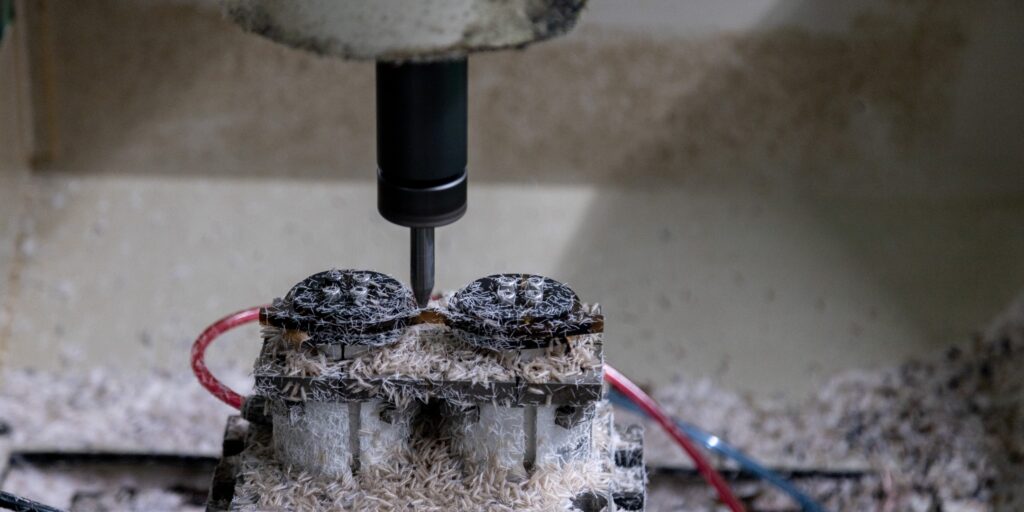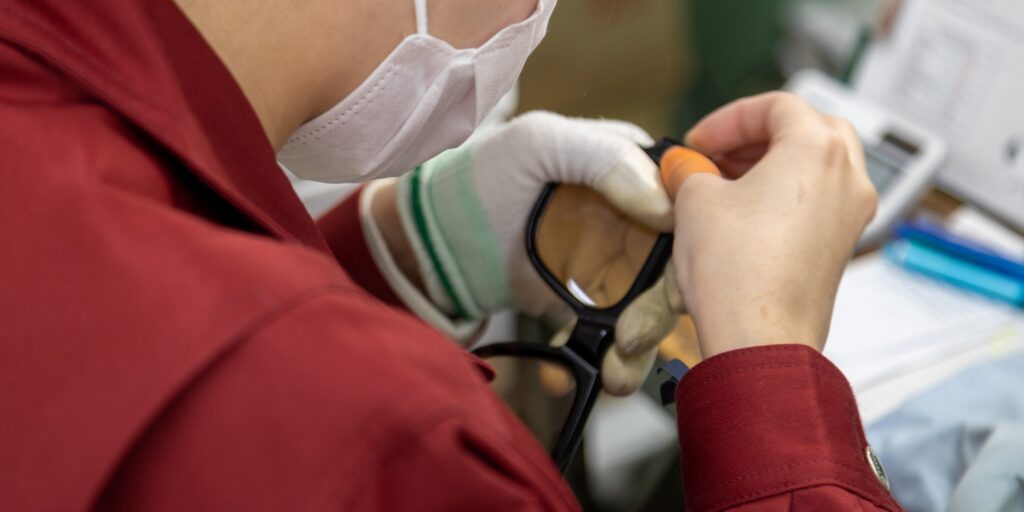Machinery and handcrafting
Holding fast to comfort
All Ena Optical products are manufactured in our plant in Japan. Although full automation has come into widespread use at many eyeglass frame plants in recent years, we believe that handcrafting is essential to ensure reliable comfort. At Ena Optical, about 30% of the processes are mechanical. The remaining 70% involve finishing our products by hand. We employ specialized machinery in the processes better handled by machines, while skilled craftspeople do the work that can only be achieved by hand. We strive to deliver products that meet customer expectations efficiently and with stability, while maintaining high quality.
Reliable mechanical process control

Our fully automated processes maintain reliable quality and production volumes that only machines can deliver from the processes of cutting raw materials using lens-measurement machines and other equipment. Specifically, the cutting process for materials cuts large sheets down to eyeglass frame size. The bending process forms the frames to fit the human face, and the Numerically Controlled Machining Center cuts the frames automatically. They are then polished in barrel polishers.
Our structure can maintain optimal production volumes at all times through periodic maintenance in line with comprehensive operation manuals and the training of staff to respond to any sudden mechanical problems. In this way, we deliver reliable supplies to customers.
Finishing with sensitivity grounded in experience

No matter how advanced the technologies and machinery that we use, ultimately it is the craftsmanship, insight, and sensitivity grounded in the experience of each employee that operates the machinery and produces our frames. Our employees can be described as quality resources. The production of eyeglass frames involves a wide range of processes, including attaching nose pads to the frames and the polishing details that cannot be polished in barrel polishers. The finishing process includes placing lenses inside the frames, adjusting them, and then a strict final inspection to detect tiny scratches or other defects.
In the past, only skilled craftspeople were capable of some techniques. In light of the need for sustainably passing along skills to future generations, however, we quantified and developed manuals for the skills needed to produce comfortable, quality eyeglass frames. Today, we produce eyeglass frames with reliable quality through manufacturing processes that all of our employees can take part in with self-confidence.

